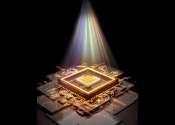An organic electrochemical transistor that serves as a sensor and processor
In recent years, electronics engineers have been trying to develop new brain-inspired hardware that can run artificial intelligence (AI) models more efficiently. While most existing hardware is specialized in either sensing, ...









